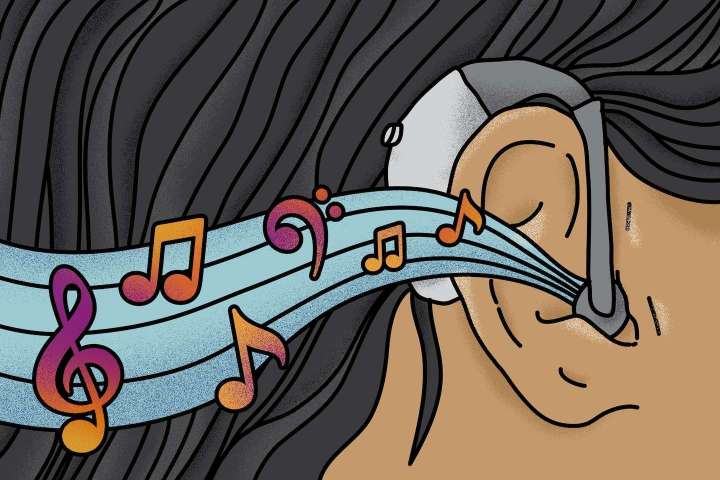Every Friday The Washington Post’s Help Desk answers questions from readers about the technology in their lives. This week, we heard from an 82-year-old reader in Atlanta wondering whether people who use hearing aids can also wear ear buds and whether the tiny in-ear headphones could ever replace hearing aids entirely.
Yes, AirPods can double as hearing aids. Here’s how.

It’s a great moment for this question — the Food and Drug Administration (FDA) decided this month to greenlight the sale of over-the-counter hearing aids, the first time Americans with hearing loss can access the aids without a prescription. This also opens the door for tech companies to tailor their ear buds to the FDA’s requirements and market them as hearing devices. Sony, for instance, said it has plans to make grab-and-go over-the-counter hearing aids. Audio company Jabra already makes ear buds with what it calls “medical-grade” hearing enhancement.
For people who already wear hearing aids, most contemporary aids come with Bluetooth compatibility, says Lindsay Creed, associate director of audiology practices at the American Speech-Language-Hearing Association. That means you can connect them to your audio source without any cords. Check with your audiologist or the manufacturer to find out whether your hearing aids are Bluetooth enabled and how to “pair” them with an audio source like a cellphone, computer or MP3 player.
If your hearing aid doesn’t come with Bluetooth, the manufacturer may sell an adapter that acts like a middleman between your phone and hearing aid. Absent that, you can always go with a pair of behind-the-ear, over-the-ear or in-the-ear headphones, audiologists told me — just make sure you’re keeping the volume around 50 percent to avoid further damage.
As for whether a good pair of ear buds could replace a hearing aid entirely — that depends, says Payal Anand, director of audiology at University of California San Francisco.
“Ear buds can provide some amplification, but they’re going to be limited in terms of how much amplification they provide and how customized they can get,” she said.
So-called hearables, or ear buds with hearing enhancement, can work great for people with mild hearing loss or trouble in noisy environments, said Anand. Apple, Beats, Bose and Panasonic are the brands her patients have had the best luck with for wireless ear buds with amplification or noise cancellation, she said.
How to tweak your ear buds for better hearing
If you’ve got later-generation Apple or Beats headphones, Apple devices let you adjust sound levels using an audiogram, or hearing test. The best results will come from a test administered by an audiologist, but in a pinch, an audiogram app can estimate your levels of hearing loss. I used the Mimi Hearing Test app to measure which high and low sounds I could hear at different volumes. Then I shared my results with the Apple Health app. Last, I went to Settings -> Accessibility -> Audio/Visual -> Headphone accommodations. I turned the green slider to the “on” position, then tapped “Custom Audio Setup” to tell the phone to use my unique audiogram to set the amplification, transparency, tone, ambient noise reduction and conversation boost levels on my AirPods.
Your custom AirPod settings should stay the same even if you use the ear buds with an Android device.
To tweak sound settings on an Android phone, try going to Settings -> Sounds and vibration -> Advanced sound settings -> Sound quality and effects -> Adapt sound. Select your age and “preview” the sound to see if the adjustment is helpful. Go to Settings -> Accessibility -> Hearing enhancements to turn on “hearing aid support” for enhanced sound quality, adjust the balance between your left and right ears when using headphones or switch to mono audio (one ear only).
Remember: You can always visit an audiologist for help dialing in your ear buds or over-the-counter hearing aids.
Even though ear buds with advanced features like fall detection and AI-powered sound adjustment may soon be approved as over-the-counter hearing aids, they’ll likely still have limitations in terms of battery life and adjustability compared to standard hearing aids, according to Anand. In short: They’ll be a cost-effective resource for people with mild to moderate hearing loss or who want a specialized, extra pair for exercise or another specific use.
For instance: Creed once had a 90-year-old patient bring in an old pair of hearing aids for some fine-tuning. She’d written a “bucket list” that included skydiving, and she didn’t want her newest hearing aid to fall out at 10,000 feet.
“She proceeded to go skydiving three or four times with those old hearing aids,” said Creed.
Ear buds with fancy hearing-enhancement software are an exciting step toward improving the affordability and accessibility of hearing devices. (Just one out of five people with hearing loss get the treatment they need, Creed noted, and some research has linked hearing loss with dementia.) But if you’ve got moderate to severe hearing loss, don’t toss out those traditional aids just yet.






